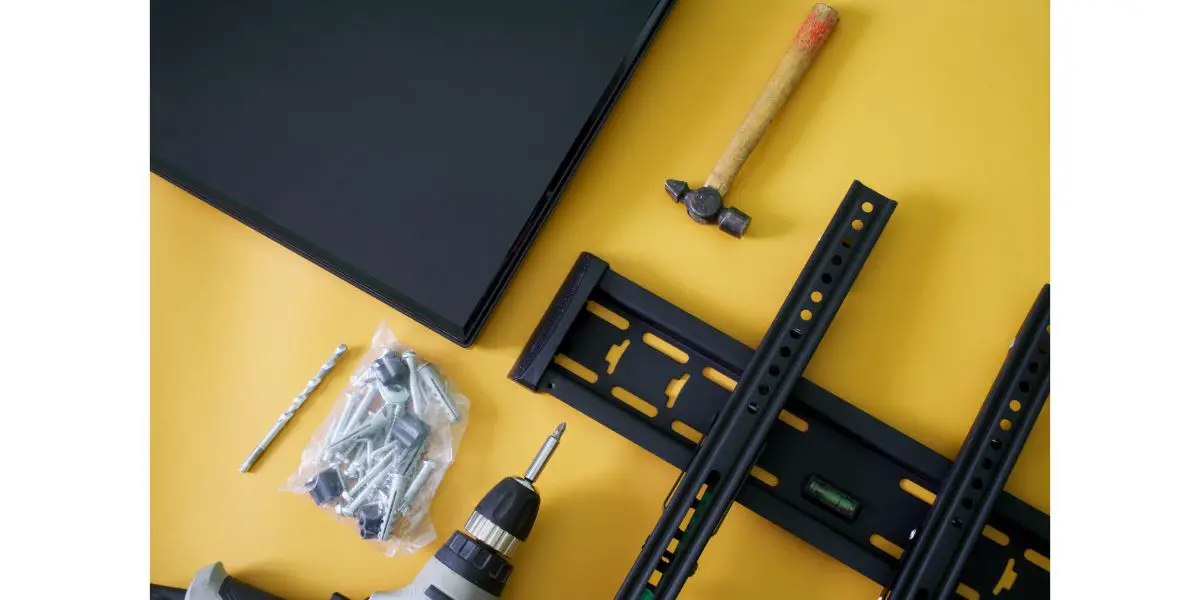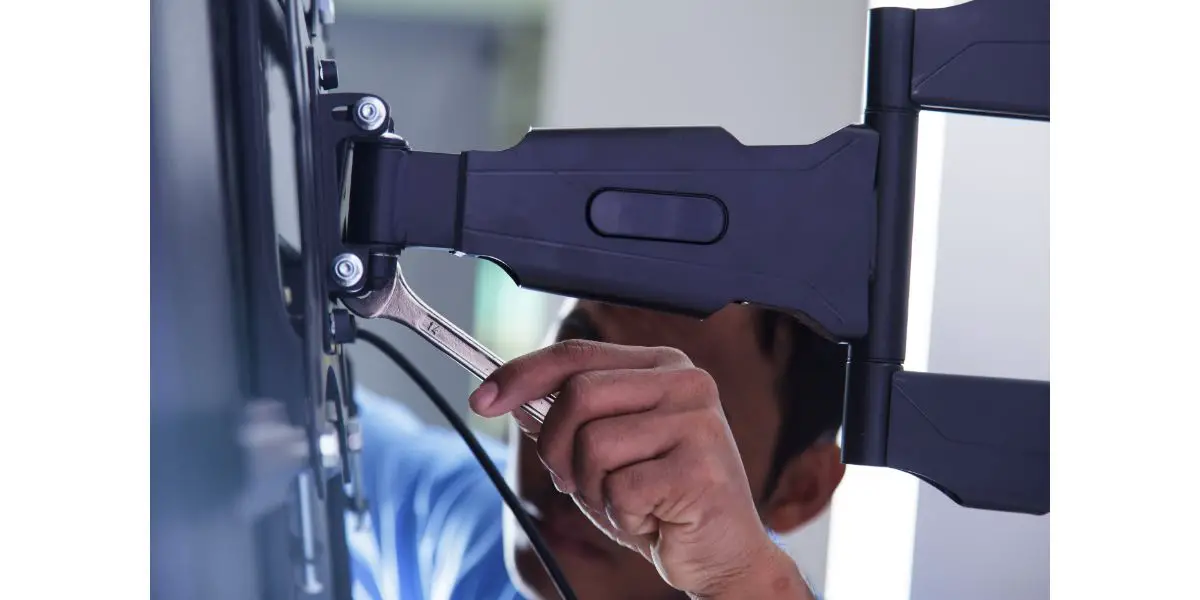Disclaimer: This post may contain affiliate links, meaning we get a small commission if you make a purchase through our links, at no cost to you. For more information, please visit our Disclaimer Page.
Flatscreen televisions come with legs that let you set them up on any flat surface, such as a console table or a shelf in an entertainment center. You also have the option of mounting the TV on your wall, which may require the use of spacers. Find out when you need to use spacers, what they do, and how to use them.
Table of Contents
What’s the Purpose of a TV Mounting Spacer?
When buying a new TV, keep track of all the hardware in the box. It should come with mounting hardware. Even if it lacks these supplies, you can pick them up from any hardware store. A TV mounting spacer is a hardware that gives you more space when you fasten two things together.
Mounting spacers usually look like small blocks but are around the size of a screw. They have a wide, flat bottom with holes around the top. You can insert a screw through one of these holes and have enough room to use any other hardware you need.
Mounting spacers often use various materials such as PVC, brass, stainless steel, and ceramic. They improve the airflow behind your TV, which can keep it from overheating.
Spacers vs. Other Options
TV spacers are just one thing you can do is to increase airflow. Some swear by washers because they are cheap and available from many stores.
Washers come in different sizes but are usually quite thin, which may not get as much air behind your TV as you need. Using washers instead of spacers can also interfere with the TV’s ventilation.
Another option is a standoff. Standoffs have a hole with threading inside it, which helps you affix a screw in place. They are popular enough that some home entertainment professionals use them when they install TVs for their clients. In most cases, you’ll find that spacers are your best bet.
Spacer Types
One thing to remember before you look at when and how to use spacers is the right type for your TV.
Basic or standard spacers resemble a small tube. You might also find that they look like tiny pipes. They have a central hole called the clearance hole. This is in the center of the spacer and gives you a spot for your screw. You can use an ordinary screw in this hole and screw it into your wall.
Span-in-spacers are another option. They have two different ends. While one end has a push fastener, the opposite features a threaded hole. Insert the screw into the threaded end and then use the fastener against the wall.
Some prefer span-in-spacers because they offer a little more durability, but others find they are hard to use. If you want to keep hard materials away from your TV, go with hexagonal spacers. As the name implies, they have a hexagonal shape.
This spacer also has a clearance hole and a feature that helps you better secure the TV to the wall. Using this feature lets you hang the TV right on a stud. Hexagonal spacers come in both nylon and brass designs.
When Should I Use a TV Spacer?
You should use a TV spacer with a curved TV. Curved TVs are quite popular today among many people. The TV matches the natural curves of the human eye, which can increase your comfort as you watch.
Many of these televisions come with stands that you use rather than a mount. The stand mimics the curve of the TV and keeps it from tipping over. If you want to mount a curved screen on the wall, use spacers. You can attach the spacers to the mounting holes on your TV’s back and use screws to secure the mount to the wall.
Another time to use a TV spacer is when you want to improve ventilation and airflow. Some mounts’ problems are that they put your TV too close to the wall. If you use it with a stand and walk by, you should feel some heat.
When you connect it to a game console, your TV produces even more heat. The TV needs to work harder to show your game graphics while the console produces some heat. TV spacers will put some distance between its back and the wall.
How to Mount TV Spacers
Learning how to mount TV spacers is the best way to secure your TV to the wall and enjoy all of the benefits of using mounting spacers. You need to start with the bracket you attach to your TV.
Though some brands include brackets in their boxes, others offer them as optional features. If you plan to mount your TV and do not have a bracket or lost the one that came with it, you need to replace it.
Using the Spacers
To use the spacers, turn your TV around and look at the back. You need to locate a rectangular spot with four holes in each corner. These holes are fairly shallow and may have screws already in them.
Place one of your spacers inside each hole and ensure they are secure. You can then attach the mount to your wall, making sure you use it on a stud for added security. Some brands call the mount a wall plate.
Once you screw the mount or plate onto the wall, lift the TV and hold it as close as possible to the mount. You must ensure that the back spacers line up with the slots on the mount. It’s helpful to gently push on the TV just to ensure that you attached it properly and that there isn’t a risk it might fall off.
Tips for Mounting Your TV
Check out some tips that make mounting your TV a little easier.
Get help: Even a smaller TV can weigh more than you think. A friend or loved one can help you line up the spacers on the back with your mount and secure the TV to the wall.
Pick the right spot: Before you hang your TV, sit in a few different areas around the room to ensure you can see it. If you hang it in a location where you can only see it from your couch or a specific chair, you’ll need to take it down and hang it up again.
Use a stud finder: While there are some methods to finding studs without the right tool, a stud finder makes the job a lot easier. It beeps when it finds the metal studs inside your walls.
Conclusion
You only need TV spacers if you have a set with a curved back or one that has spots on the back that keep it from sitting flush with the wall. They also come in handy if you have a TV that runs hot and want to keep it cool and prevent it from overheating. TV spacers improve airflow and ventilation when used with most TVs.


